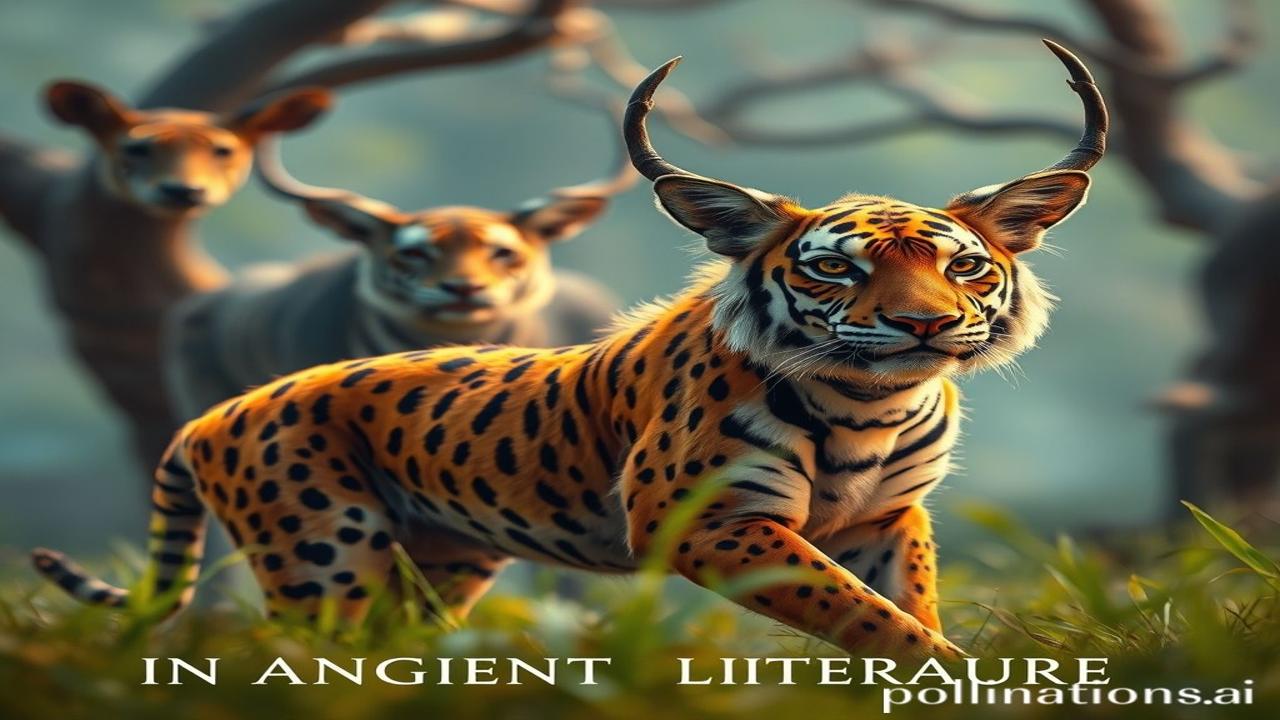Jungle Book Se Pehle: When Animals Talked in Ancient Indian Literature
Kabhi socha hai, Mahabharat ke yudh mein, Arjun ke rath par Hanuman ji kya kar rahe the? Ya phir, jab Gautam Buddha ne apne jivan ke antargat pashuon se kya seekha? Waqt ki dhool mein dabi hain aisi anegin kahaniyan jahan wildlife sirf scenery nahin, characters the, gurus the, aur destiny ke player bhi the. Come, let’s uncover this fascinating chapter of India’s past!
Wildlife in Ancient Indian Literature: An Overview
What? We’re talking about how animals and nature were central themes in ancient Indian literature – from the Vedas to the Puranas, from the epics to the Jataka tales.
When & Where? From around 1500 BCE (Vedic period) onwards, across the Indian subcontinent. This understanding of wildlife evolved and flourished over millennia, reflected in various texts.
Why Important? Because it shows how deeply connected our ancestors were to the natural world. They didn’t see themselves as separate from it, but as an integral part. This reverence and understanding are crucial even today, especially as we grapple with ecological challenges.
Zameeni Sach: People and Wildlife – A Symbiotic Dance
Imagine a rishi, deep in the forest, conversing with deer. Picture a farmer praying to the bull before tilling the soil. Life in ancient India was interwoven with the presence and respect for wildlife.
- Rulers & Warriors: Raja Dasharatha, the famed hunter, understood the forest and its inhabitants. Warriors revered animals for their strength and agility – think of Hanuman’s unwavering devotion and immense power.
- Artisans & Farmers: Potters used clay sourced ethically, respecting the earth. Farmers relied on bullocks for plowing and saw them as sacred. Their lives were dictated by the rhythms of nature.
- Saints & Dancers: Sages like Valmiki found solace and inspiration in nature. Dancers mimicked the movements of animals – the graceful walk of an elephant, the sinuous slither of a snake – in their performances.
Dialogue Snapshot:
“Arya, dekhiye, woh hiran kitna sundar hai,” says a young disciple to his guru in an ashram. “Uske nirdos aankhon mein jeevan ka satya chupa hai,” replies the guru, pointing towards the deer. This encapsulates the ancient Indian perspective – seeing wisdom and lessons in every creature.
Dharohar aur Pehchan: Echoes of the Past in Today’s India
Aaj bhi hum Ganesh ji ko elephant-headed deity ke roop mein poojte hain. Naga Panchami par saapon ki puja hoti hai. Gaaye ko mata maana jata hai. This respect for wildlife is woven into the very fabric of our culture. Even in modern Bollywood, you’ll find references to animals – think of the loyal horse in a Rajput saga or the protective tiger in a village tale.
Yeh “Bharatiyata” (Indianness) ka ek aham hissa hai – the understanding that we are not masters of the earth, but caretakers.
Mazedar Tathya Ya Bhram-Bhanjak: Did You Know?
Log samajhte hain ki ‘Jungle Book’ Kipling ki original rachna hai, lekin bahut kam logon ko pata hai ki uski kayi kahaniyan Panchatantra ki neeti-kathayon se prerit hain! Many stories in ‘The Jungle Book’ are directly or indirectly inspired by the ancient Indian collection of fables, Panchatantra.
Drishya Aur Bhavnayein: A Sensory Journey
Imagine standing by the banks of the Ganga. The air smells of sandalwood and incense from a nearby temple. The gentle breeze carries the sounds of chanting and the rustling of leaves. The warm sand beneath your feet feels grounding. Wild elephants bathe peacefully in the river, undisturbed by human presence.
This is the India our ancestors knew – a land where humanity and nature lived in harmony.
Antim Vichar Ya Uddharan: A Thought to Ponder
“Vasudhaiva Kutumbakam” – The world is one family. This ancient Sanskrit phrase encapsulates the core of the Indian worldview. It includes all beings, human and animal alike. Let’s strive to rediscover that connection and treat our planet with the respect it deserves.
“Sarve bhavantu sukhinah, sarve santu niramayah.” (May all be happy, may all be free from illness.) Let us extend this prayer not just to humans, but to every creature on this earth.
